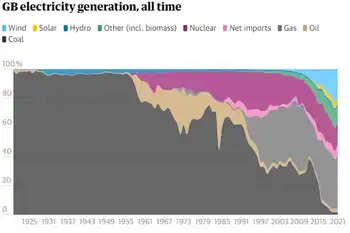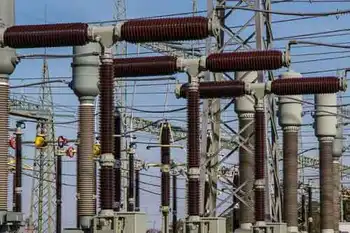Wind power companies want federal renewable standards
By Medill Reports
NFPA 70b Training - Electrical Maintenance
Our customized live online or in‑person group training can be delivered to your staff at your location.

- Live Online
- 12 hours Instructor-led
- Group Training Available
Industry leaders stressed the need for renewable energy standards at the American Wind Energy AssociationÂ’s WINDPOWER 2009 conference in Chicago, attended by some 21,000 wind developers, suppliers and advocates.
AWEA is calling on the Congress to pass a national Renewable Electricity Standard, which would require that a quarter of the nationÂ’s electricity come from renewable sources by 2025 to reduce greenhouse gas emissions and spur economic development. European Union member-states and China have already established similar guidelines, and 28 U.S. states have also adopted their own measures.
“The beauty of renewable is we only need capital,” said Michael Polsky, CEO of Chicago-based Invenergy LLC.
“We don’t need fuel, we don’t need coal, we don’t need uranium, we don’t need natural gas,” he said. “If we have a policy, we can execute it.”
The wind industry voiced concerns that without solid national energy standards, the progress it has made toward becoming a viable competitor to fossil fuels may be set back by loss of investor confidence amid the global economic crisis.
Wind developers got a boost in the form of energy production and investment tax credits from the American Recovery and Reinvestment Act that was passed in February. The stimulus perks have ushered in an opportunity for developers to access a wider pool of investment, according to retired U.S. Army Gen. Wesley Clark, who serves on the board of Emergya Wind Technologies and is the chairman of investment bank Rodman & Renshaw Capital Group Inc.
“Wall Street is just starting to recognize that this completely changes the wind financing market,” Clark said. “Now an entrepreneur can go in and offer something that not only big insurance and big banks can handle, but actually private equity can do.”
Foreign wind developers are seeing the Obama administrationÂ’s enthusiasm for alternative energy as encouragement to create American operations and develop viable supply chains based in the country.
Leading Denmark-based wind manufacturer Vestas Wind Systems A/S is currently investing one billion dollars in wind operations in Colorado, though the company long held back on U.S. investment because of inconsistent energy policies, said Ditlev Engel, Vestas president and CEO.
“We believe that things are changing,” he said. “Some of the best wind resources on the planet are in this country, and it’s a bit like going to Saudi Arabia and deciding not to drill for the oil.”
Between September and December, the wind financing model weakened along with the total economy because of its base in passive income tax credits. With the failure of the real estate market, income losses made it difficult for companies to continue financing of wind turbine development.
Despite the infusion of capital from the federal stimulus package, uncertainty about the future of the RES has made investors timid. The U.S. has wavered on its commitment to a 2.1 cent-per-kilowatt-hour renewable energy production tax credit in the past, allowing it to lapse in 1999, 2001 and 2003. Congress has extended it until 2012 through the ARRA, but major investors want to see a stable environment for growth in the long term.
“People are nervous because they’ve seen the stop-go nature of government policies,” Clark said. “We don’t know exactly how the renewable standard will emerge from Congress.”
Opponents of subsidies for alternative energy argue against a national standard because of elevated costs of wind-produced electricity. Wind power currently costs as much as four or five times the power from sources like nuclear energy that Americans have become accustomed to.
Lobbying by traditional utility producers and energy consumers may pressure congressional leaders to deemphasize the standards AWEA says it needs.
But wind producers say the long-term benefits of wind production outweigh the current costs, especially with looming charges on carbon emissions, combined with and the strides in wind-power technology and the intangible benefits of reducing the carbon footprint.
“If we rely on the free market, we would never have a clean air act, we would never have a clean water act, we would never have highways,” Polsky said. “We would live still in dark ages, because the free market can only deal with execution, not with long-term policy.”
With adequate investments, developers believe they can make wind competitive on its own merits, using the global market to deliver wind power as cheaply as possible, said Declan Flanagan, CEO of E.On Climate & Renewables N.A. Inc.
“We’re in renewable because it works,” he said. “This is real power generation.”
By creating supply chains close to production in the U.S. and using emerging technologies, developers believe they can create stable jobs — including some from the faltering auto supply industry — while cutting production costs.
“Once we build them, the technician and operator jobs created by that wind farm aren’t going anywhere,” Flanagan said. “It’s a positive feedback loop once you get the policy right and the investment right.”











